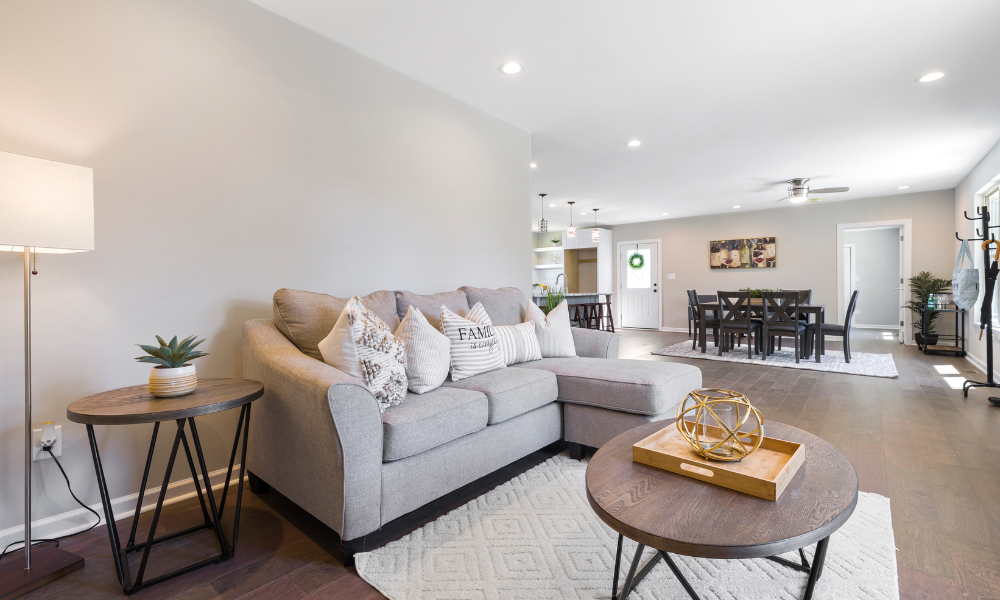How to Mix Antique and Contemporary Pieces Like a Pro
Interior design today is all about expressing individuality, and nothing speaks to a refined sense of style like combining the old with the new. Mix antique and contemporary pieces allows homeowners to create a layered, interesting, and dynamic space that feels both timeless and fresh.
But achieving this balance is an art. Done right, it results in a sophisticated, curated interior. Done wrong, it can look cluttered or disjointed.
This guide will show you How To Blend Antique And Contemporary Pieces Like A Pro, so your home tells a story that spans generations.
Why Mix Antique and Contemporary Styles?
Blending antique and modern pieces is more than a trend—it’s a way to:
- Add character to minimalist or sterile contemporary spaces
- Introduce contrast that draws the eye and creates conversation
- Preserve heritage while embracing innovation
- Create depth in interiors with mixed textures, finishes, and histories
- Sustain sustainability by giving old furniture a new life
The right mix adds soul to a space and gives it a bespoke, designer touch.
Key Principles for Mixing Antique and Contemporary Decor
1. Start with a Neutral Base
Creating harmony starts with a solid foundation. Neutral tones—whites, grays, beiges—provide a calming backdrop that allows both antique and modern items to shine without competing.
A neutral base makes it easier to add contrast through materials, shapes, and time periods without overwhelming the senses.
2. Balance is Everything
Visual balance is the key to mixing eras. Don’t overcrowd a space with too many ornate antiques or go too minimal with only modern pieces. Aim for a 60/40 or 70/30 ratio, depending on your taste—60% contemporary with 40% antique, or vice versa.
For example, a modern sofa can be paired with a carved wooden antique coffee table. Or place a bold, contemporary artwork above a vintage console.
3. Unify with Color or Texture
Even if items are from different periods, unifying them through color palettes or material textures creates a cohesive look.
Examples:
- An antique chair reupholstered in a modern velvet fabric
- A set of antique brass candle holders on a sleek, glass-top dining table
This approach keeps the decor eclectic, yet curated.
Room-by-Room Styling Tips
Living Room
- Modern furniture + Antique accents: Start with a streamlined sofa or sectional and layer in vintage side tables, a gilded mirror, or an antique trunk as a coffee table.
- Art fusion: Hang contemporary art above an ornate antique fireplace or behind a Louis XVI-style chair for striking contrast.
Dining Room
- Mix seating: Put historic chairs next to a modern dining table, or the other way around.
- Lighting play: A dramatic antique chandelier hanging above a clean-lined table creates a luxurious focal point.
Bedroom
- Combine a contemporary platform bed with vintage nightstands or a Victorian armoire.
- Use vintage rugs or throws to warm up a minimalist space.
Entryway
- A statement antique console table under a sleek mirror makes a powerful first impression.
- Add some contemporary artwork or sculpture on the wall above.
Where to Find the Right Pieces
- Antique Shops & Flea Markets: Look for unique items with quality craftsmanship. Even imperfect pieces add charm.
- Online Marketplaces: Etsy, 1stDibs, and Facebook Marketplace are treasure troves of antique finds.
- Local Artisans or Restorers: They can help refurbish vintage pieces to fit modern aesthetics.
Be patient—it’s worth taking time to find items that genuinely resonate with your space.
Expert Tips for Seamless Mixing
Respect Scale & Proportion
Match the size and proportion of items so they don’t feel out of place. For example, don’t place a tiny antique side chair next to a massive modern sectional.
Repurpose with Purpose
Give antiques new life—use an old dresser as a bathroom vanity or turn a vintage ladder into a towel rack.
Layer with Intention
Layer different periods and styles, but avoid clutter. Each item should feel intentional, not random.
Embrace Patina
Don’t over-restore antiques. A story is told and authenticity is added by aging, wear, and scratches.
Let One Item Be the Star
Highlight one major antique piece in a room—like a grand armoire, vintage mirror, or heirloom dining table—and let modern pieces support it.
Common Mistakes to Avoid
- Theme overload: Don’t go overboard trying to replicate a certain era or style—this can feel like a museum instead of a home.
- Ignoring function: Make sure every item, antique or not, is functional and suits your lifestyle.
- Color clash: Bold colors are okay, but ensure the overall palette remains harmonious.
- Copying blindly: Take inspiration from Pinterest or design magazines but make it your own. Your space should reflect your personality and story.
The Emotional Value of Blending Eras
Beyond aesthetics, Mixing Antique and modern decor has emotional depth. It:
- Keeps family history alive through heirlooms
- Reflects the homeowner’s journey and evolution
- Creates a meaningful narrative in each room
- Encourages conscious design choices, not disposable trends
Designing your space this way becomes less about style and more about storytelling.
Mixing antique and contemporary pieces is about more than just furniture—it’s about crafting an environment that respects the past while embracing the present. It allows for expression, creativity, and uniqueness in a world full of mass-produced sameness.
Whether you’re redesigning your entire home or just updating a room, don’t be afraid to experiment with contrast, texture, and time. When you mix antique and contemporary pieces like a pro, your interiors become timeless, elegant, and uniquely yours.


